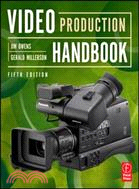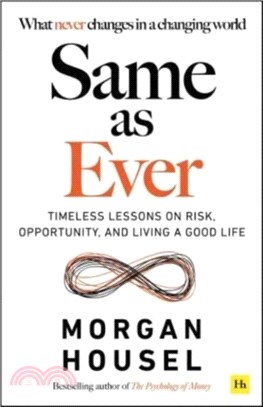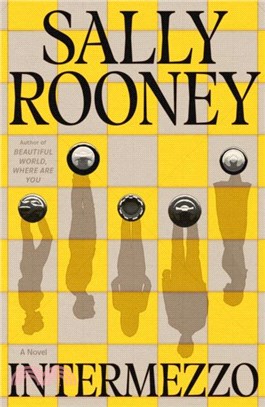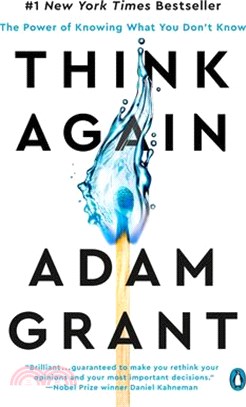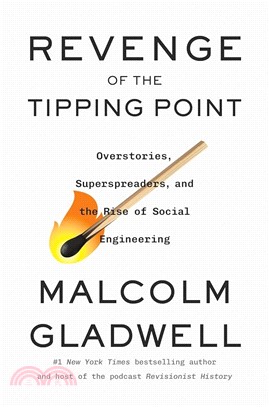Video Production Handbook
商品資訊
ISBN13:9780240522203
出版社:Focal Pr
作者:Jim Owens; Gerald Millerson
出版日:2011/06/20
裝訂/頁數:平裝/394頁
規格:23.5cm*19.7cm*2.5cm (高/寬/厚)
版次:5
定價
:NT$ 2078 元優惠價
:90 折 1870 元
無庫存,下單後進貨(到貨天數約45-60天)
下單可得紅利積點:56 點
商品簡介
作者簡介
目次
相關商品
商品簡介
Techniques matter! Great ideas don't automatically translate into great programs. It's not enough simply to show what is going on. The way you present your subject will influence how your audience responds. You need to choose your picture and sound carefully, to convey your ideas in an interesting, persuasive way. This book will show you how.
Video Production Handbook shows the full production process, from inception of idea to final distribution. The book focuses especially on why each step occurs as it does and provides guidance in choosing the simplest methods of creating the shots you want in your video project. Concentrating on the techniques and concepts behind the latest equipment, this book demonstrates the fundamental principles needed to create good video content on any kind of budget.
Suitable for students and beginning videographers, the new edition of this classic text retains its clarity and directness but has been completely revised and updated.
This practical sourcebook has been specially prepared to give you an at-a-glance guide to quality video program-making on a modest budget. Emphasis throughout is on excellence with economy; whether you are working alone or with a small multi-camera group. The well-tried techniques detailed here will steer you through the hazards of production, helping you to avoid those frustrating, time-wasting problems, and to create an effective video program.
* Highly visual: more than 450 full color photos and illustrations demonstrate techniques* Modern: Revised by Jim Owens, who brings a wealth of hands-on experience to the text; up-to-date information on current equipment, techniques, and new distribution outlets such as the Web and mobile phones* A complete resource: Detailed teaching ancillaries are available for instructors, including instructor's manual, test bank, sample syllabi, image collection, video content, and more * Brand new coverage of contemporary distribution methods* Interviews featuring industry professionals provide students with inside knowledge of the industry* Sidebars featuring new coverage of topics such as shooting for 3D, shooting with HDSLRs for video, and much more!
Video Production Handbook shows the full production process, from inception of idea to final distribution. The book focuses especially on why each step occurs as it does and provides guidance in choosing the simplest methods of creating the shots you want in your video project. Concentrating on the techniques and concepts behind the latest equipment, this book demonstrates the fundamental principles needed to create good video content on any kind of budget.
Suitable for students and beginning videographers, the new edition of this classic text retains its clarity and directness but has been completely revised and updated.
This practical sourcebook has been specially prepared to give you an at-a-glance guide to quality video program-making on a modest budget. Emphasis throughout is on excellence with economy; whether you are working alone or with a small multi-camera group. The well-tried techniques detailed here will steer you through the hazards of production, helping you to avoid those frustrating, time-wasting problems, and to create an effective video program.
* Highly visual: more than 450 full color photos and illustrations demonstrate techniques* Modern: Revised by Jim Owens, who brings a wealth of hands-on experience to the text; up-to-date information on current equipment, techniques, and new distribution outlets such as the Web and mobile phones* A complete resource: Detailed teaching ancillaries are available for instructors, including instructor's manual, test bank, sample syllabi, image collection, video content, and more * Brand new coverage of contemporary distribution methods* Interviews featuring industry professionals provide students with inside knowledge of the industry* Sidebars featuring new coverage of topics such as shooting for 3D, shooting with HDSLRs for video, and much more!
作者簡介
Jim Owens has worked and taught in the video and television industry for over 30 years. He has worked on local, regional and national productions. Owens' international television work has included eleven Olympic broadcasts and has taken him to over twenty-five countries. He is the author of the Video Production Handbook, Television Production, and Television Sports Production (all published by Focal Press), and has had over thirty articles published in television and broadcast magazines in the United States and Europe. Owens is Dean of the School of Communication Arts at Asbury University in Wilmore, Kentucky, where he has taught since 1981.
目次
INTRODUCTION CHAPTER 1 Overview of Video Production 1.1 What is video production? FIRST STEP IN VIDEO PRODUCTION 1.2 Defining the new media 1.3 Distribution 1.4 Understanding the field of Video Production 1.5 It's designed for you 1.6 Learning basics 1.7 Remember the purpose 1.8 Equipment Sidebar: Versatility of Video 1.9 What equipment is needed? 1.10 Is there a right way? Interview: Ben Brown, Media Executive 1.11 The production approach TECHNICALITIES 1.12 Equipment performance
CHAPTER 2 Production Crew 2.1 Production crew size VIDEO PRODUCTION CREW JOB DESCRIPTIONS 2.2 Producer 2.3 Assistant producer or associate producer (AP) 2.4 Director 2.5 Assistant director or associate director (AD) 2.6 Floor manager (FM) or stage manager (SM) 2.7 Production assistant (PA) 2.8 Technical director (TD) or vision mixer 2.9 Makeup artist 2.10 Graphic designer/operator 2.11 Lighting director/vision supervisor 2.12 Camera operator 2.13 Camera assistant 2.14 Audio mixer/sound mixer/sound supervisor 2.15 Stereographer Interview: Tommy Mitchell, Crewer for productions 2.15 Boom operator or audio assistant 2.16 Engineer 2.17 Writer 2.18 Editor Sidebar: The Crew 2.19 Set designer PROFESSIONAL CREW 2.20 Freelance crew 2.21 Below-the-line/above-the-line 2.22 The structure of a video production crew
CHAPTER 3 Organizing the Production 3.1 Art conceals craft 3.2 Shot selection 3.3 The problem of familiarity 3.4 The problem of quality 3.5 The problem of "bigger and better 3.6 Communication can be elusive 3.7 Start with an idea (concept) Interview: DT Slouffman, Producer 3.8 Goals and objectives 3.9 Target audience 3.10 Research 3.11 Covering the subject 3.12 Production methods 3.13 The empirical approach 3.14 The planned approach 3.15 Storyboards 3.16 Why plan? 3.17 The three stages of production 3.18 Coverage 3.19 Building an outline 3.20 Broad treatment 3.21 Production research 3.22 Remote surveys (recce) 3.23 Freedom to plan 3.24 Single camera shooting 3.25 Multicamera shooting 3.26 Budgeting 3.27 Copyright 3.28 Contracts
CHAPTER 4 Production techniques 4.1 Single- and multicamera production Sidebar: 3D Shot Selection 4.2 Multicamera ISO 4.3 Multicamera production without a switcher 4.4 The illusion of reality 4.5 The camera's role 4.6 The camera as an observer 4.7 The persuasive camera 4.8 Beginning and ending 4.9 Production methods 4.10 How do you visualize something that does not exist? Interview: Scott Rogers, Sports Producer
CHAPTER 5 Writing for Video 5.1 The script's purpose 5.2 Is a script needed? 5.3 Basic script formats Interview: Robyn Sjogren, Writer: CNN & TruTV 5.4 The full script TIPS: Tips for writing better dialog: keeping it brief 5.5 The drama script 5.6 Suggestions on scriptwriting 5.7 Be visual 5.8 Assimilation 5.9 Relative pace 5.10 Style TIPS: Tips on developing the script
CHAPTER 6 The Camera 6.1 A range of models 6.2 Cameracraft CAMERA FEATURES 6.3 Main features Sidebar: The DSLR (Pros and Cons) 6.4 The lens system 6.5 Focal length and lens angle 6.6 The prime lens 6.7 The zoom lens 6.8 Zoom lens remote controls 6.9 The aperture of the camera 6.10 Lens accessories Interview: Keith Brown, Videographer 6.11 The image sensor 6.12 Sensitivity 6.13 The viewfinder 6.14 Indicators 6.15 Audio 6.16 Power CONTROLLING THE CAMERA 6.17 Handling the camera 6.18 Supporting the camera 6.19 Handheld cameras 6.20 The monopod 6.21 The pan head (panning head or tripod head) 6.22 Using a tripod 6.23 The rolling tripod/tripod dolly 6.24 The pedestal 6.25 Gorilla Pod 6.26 Beanbag 6.27 Jib arms 6.28 Specialty camera mounts 6.29 Handling care
CHAPTER 7 Using the Camera 7.1 Just point and shoot 7.2 What gets on the screen? 7.3 How close should you get? Sidebar: Camera Shots Sidebar: Shooting for the Internet 7.4 How much can we see? 7.5 Lens angles 7.6 So why move around? 7.7 The zooming process CONTROLLING THE ZOOM 7.8 Focusing 7.9 Auto-focus Interview: Nathan White: Videographer 7.10 Depth of field 7.11 Maximum sharpness? 7.12 Difficult to focus? 7.13 Prefocusing the zoom lens Sidebar: Prefocusing the Zoom EXPOSURE 7.14 What is "exposure? 7.15 Underexposure and overexposure 7.16 Automatic exposure 7.17 Camera adjustments 7.18 Practical solutions Sidebar: Ten Commandments of Shooting Video HANDLING THE CAMERA 7.19 Panning and tilting 7.20 Following moving subjects 7.21 Framing movement 7.22 Walking 7.23 Shooting from vehicles THE BASICS OF SHOOTING 7.24 Practical conditions Sidebar: Shooting in 3D 7.25 Selecting the right shots 7.26 Persuasive shots 7.27 Guiding the viewer through the scene 7.28 Clutter 7.29 I can't see it properly COMPOSING PICTURES 7.30 Composition rules and guidelines 7.31 The brief shot 7.32 "Boring is in the mind 7.33 Shots that are different 7.34 Fitting the frame Sidebar: Framing People 7.35 Watch the background 7.36 Dividing the image into thirds 7.37 Shooting from different angles 7.38 Showing scale 7.39 Framing the subject 7.40 Leading lines 7.41 Headroom 7.42 Good balance 7.43 Changing the perspective 7.44 Grouping (unity) 7.45 Camera viewpoint 7.46 Distortions ANTICIPATING EDITING 7.47 Continuity 7.48 Improving editing flexibility Sidebar: Common Faults While Shooting 7.49 What does a filter do? 7.50 Crossing the line
CHAPTER 8 Shooting People and Objects SHOOTING PEOPLE 8.1 The single person 8.2 Arranging people shots 8.3 Effective shots 8.4 Selecting the right shot 8.5 Single-camera interviews Interview: Sarah Leckie, International Documentary Director/Videographer 8.6 Editing continuous interviews 8.7 Shooting groups 8.8 Car interviews 8.9 Walking interviews Sidebar: Shooting an Effective Interview SHOOTING INSTRUCTIONAL PRODUCTIONS 8.10 Typical instructional productions 8.11 Approaches to instruction 8.12 Advance planning 8.13 Creating the instructional program 8.14 Shooting objects
CHAPTER 9 Working with the Talent 9.1 Talent Sidebar: High-Definition Makeup 9.2 Talent and production styles 9.3 The interview: go beyond the obvious 9.4 Selecting talent Sidebar: Working with New Talent 9.5 Inexperienced talent 9.6 The host 9.7 The off-camera host Interview: Kristin Ross Lauterbach, Director 9.8 Presenting the information 9.9 Importance of people in the scene
CHAPTER 10 Audio for Video 10.1 The essential component 10.2 Acoustics 10.3 Stereo sound Sidebar: First Surround Sound 10.4 Surround sound Interview: Noel Dannemiller, Sound Mixer 10.5 Microphone care 10.6 Directional features 10.7 Popular types of microphone SUPPORTING THE MICROPHONE 10.8 Camera microphones 10.9 The handheld microphone 10.10 The shotgun microphone 10.11 Using the shotgun microphone 10.12 The shotgun and the boom pole (fishpole) 10.13 Lavalier (lapel or clip-on mic) microphones 10.14 Boundary or PZM microphone 10.15 Hanging microphone 10.16 Surround sound microphone 10.17 Microphone stands and mounts 10.18 Wireless microphone 10.19 Hidden mics CONTROLLING DYNAMICS 10.20 Dynamic range 10.21 Automatic control for audio 10.22 Manual control 10.23 Monitoring the audio 10.24 The audio mixer 10.25 Using the audio mixer 10.26 Natural sound 10.27 Anticipation 10.28 Anticipating sound editing 10.29 Filtered sound 10.30 Reverberation 10.31 Program music 10.32 Sound effects
CHAPTER 11 Lighting for Video 11.1 Lighting for the scene 11.2 The camera does not compensate 11.3 The key factors 11.4 The light's intensity 11.5 If there is not enough light 11.6 If there is too much light 11.7 Hard light quality(spotlight) Interview: Tommy Brown, Lighting 11.8 Soft light quality (floodlight) 11.9 Lighting contrast Sidebar: Lighting Direction Exercise 11.10 Three-point lighting 11.11 Color temperature compensation 11.12 Using colored light 11.13 Shooting in daylight 11.14 Using reflectors 11.15 Bounce light 11.16 Do we really need to light it? 11.17 Lighting options 11.18 Existing light LIGHTWEIGHT LIGHT SUPPORTS 11.19 Grip clamps 11.20 Light stands Sidebar: Lighting Safety LIGHTING INSTRUMENTS 11.21 Camera light 11.22 Scoop 11.23 Broad 11.24 The portable soft light 11.25 Multilamp sources 11.26 Open face adjustable light 11.27 Fresnel spotlights PRACTICAL LIGHTING 11.28 The general approach to lighting 11.29 Using one light 11.30 Using multiple lights
CHAPTER 12 The Background 12.1 The importance of the background 12.2 The impact of the background Sidebar: Backgrounds (sets) are a Matter of Taste 12.3 Real and unreal backgrounds 12.4 Set components 12.5 Set design for 16:9 12.6 The neutral background 12.7 Economical sets 12.8 Semipermanent sets 12.9 Chroma-key/matting 12.10 Virtual sets 12.11 Outside/back-lot sets 12.12 The location as a background 12.13 Watch the background 12.14 Foreground pieces 12.15 Versions of "reality 12.16 What can we do about the background? Interview: John DeCuir, Designer 12.17 Rearranging the background 12.18 Partial settings 12.19 Typical examples of partial settings 12.20 Facing reality
CHAPTER 13 Television Graphics 13.1 The goals of television graphics 13.2 Types of graphics 13.3 Designing graphics Sidebar: The Graphic Operator 13.4 Animated graphics Interview: Lou Moore, Graphic Operator 13.5 Backgrounds for graphics 13.6 Graphics equipment
CHAPTER 14 Recording and Viewing the Video RECORDING THE VIDEO 14.1 High-definition television (HDTV or HD) 14.2 Videotape 14.3 Analog and digital 14.4 Tape formats Interview: Ryan Hammer, Atlast Digital 14.5 Flash memory 14.6 Hard disk drive (HDD) (internal hard drive) 14.7 External camera hard drives 14.8 Hard drive server recorders 14.9 Recordable DVD 14.10 XDCAM disk 14.11 Recording media care 14.12 Video recording suggestions VIEWING THE VIDEO 14.13 How we see color Sidebar: Health Risks & 3DTV? 14.14 How the camera sees color 14.15 Monitors and receivers
CHAPTER 15 Editing 15.1 Editing goals 15.2 Shooting order versus running order Sidebar: Editing in 3D 15.3 Editing video and audio 15.4 Logging 15.5 An overview of the nonlinear process Interview: Brock Smith, Editor Sidebar: Habits of a Highly Effective Editor 15.6 Editing equipment 15.7 Organization 15.8 Editing begins 15.9 Selecting required sections 15.10 The order of shots 15.11 Where should the edits be made? 15.12 Transitions Sidebar: Common Transitions 15.13 Good continuity 15.14 Editing priorities 15.15 Good editing techniques 15.16 Anticipating editing
CHAPTER 16 Distributing Your Production 16.1 Traditional broadcast distribution 16.2 Traditional non-broadcast distribution 16.3 Distributing hard copies of the production 16.4 Online distribution 16.5 Live online distribution Interview: Chad Crouch: CEO, The Creative Group 16.6 IPTVGLOSSARY INDEX
CHAPTER 2 Production Crew 2.1 Production crew size VIDEO PRODUCTION CREW JOB DESCRIPTIONS 2.2 Producer 2.3 Assistant producer or associate producer (AP) 2.4 Director 2.5 Assistant director or associate director (AD) 2.6 Floor manager (FM) or stage manager (SM) 2.7 Production assistant (PA) 2.8 Technical director (TD) or vision mixer 2.9 Makeup artist 2.10 Graphic designer/operator 2.11 Lighting director/vision supervisor 2.12 Camera operator 2.13 Camera assistant 2.14 Audio mixer/sound mixer/sound supervisor 2.15 Stereographer Interview: Tommy Mitchell, Crewer for productions 2.15 Boom operator or audio assistant 2.16 Engineer 2.17 Writer 2.18 Editor Sidebar: The Crew 2.19 Set designer PROFESSIONAL CREW 2.20 Freelance crew 2.21 Below-the-line/above-the-line 2.22 The structure of a video production crew
CHAPTER 3 Organizing the Production 3.1 Art conceals craft 3.2 Shot selection 3.3 The problem of familiarity 3.4 The problem of quality 3.5 The problem of "bigger and better 3.6 Communication can be elusive 3.7 Start with an idea (concept) Interview: DT Slouffman, Producer 3.8 Goals and objectives 3.9 Target audience 3.10 Research 3.11 Covering the subject 3.12 Production methods 3.13 The empirical approach 3.14 The planned approach 3.15 Storyboards 3.16 Why plan? 3.17 The three stages of production 3.18 Coverage 3.19 Building an outline 3.20 Broad treatment 3.21 Production research 3.22 Remote surveys (recce) 3.23 Freedom to plan 3.24 Single camera shooting 3.25 Multicamera shooting 3.26 Budgeting 3.27 Copyright 3.28 Contracts
CHAPTER 4 Production techniques 4.1 Single- and multicamera production Sidebar: 3D Shot Selection 4.2 Multicamera ISO 4.3 Multicamera production without a switcher 4.4 The illusion of reality 4.5 The camera's role 4.6 The camera as an observer 4.7 The persuasive camera 4.8 Beginning and ending 4.9 Production methods 4.10 How do you visualize something that does not exist? Interview: Scott Rogers, Sports Producer
CHAPTER 5 Writing for Video 5.1 The script's purpose 5.2 Is a script needed? 5.3 Basic script formats Interview: Robyn Sjogren, Writer: CNN & TruTV 5.4 The full script TIPS: Tips for writing better dialog: keeping it brief 5.5 The drama script 5.6 Suggestions on scriptwriting 5.7 Be visual 5.8 Assimilation 5.9 Relative pace 5.10 Style TIPS: Tips on developing the script
CHAPTER 6 The Camera 6.1 A range of models 6.2 Cameracraft CAMERA FEATURES 6.3 Main features Sidebar: The DSLR (Pros and Cons) 6.4 The lens system 6.5 Focal length and lens angle 6.6 The prime lens 6.7 The zoom lens 6.8 Zoom lens remote controls 6.9 The aperture of the camera 6.10 Lens accessories Interview: Keith Brown, Videographer 6.11 The image sensor 6.12 Sensitivity 6.13 The viewfinder 6.14 Indicators 6.15 Audio 6.16 Power CONTROLLING THE CAMERA 6.17 Handling the camera 6.18 Supporting the camera 6.19 Handheld cameras 6.20 The monopod 6.21 The pan head (panning head or tripod head) 6.22 Using a tripod 6.23 The rolling tripod/tripod dolly 6.24 The pedestal 6.25 Gorilla Pod 6.26 Beanbag 6.27 Jib arms 6.28 Specialty camera mounts 6.29 Handling care
CHAPTER 7 Using the Camera 7.1 Just point and shoot 7.2 What gets on the screen? 7.3 How close should you get? Sidebar: Camera Shots Sidebar: Shooting for the Internet 7.4 How much can we see? 7.5 Lens angles 7.6 So why move around? 7.7 The zooming process CONTROLLING THE ZOOM 7.8 Focusing 7.9 Auto-focus Interview: Nathan White: Videographer 7.10 Depth of field 7.11 Maximum sharpness? 7.12 Difficult to focus? 7.13 Prefocusing the zoom lens Sidebar: Prefocusing the Zoom EXPOSURE 7.14 What is "exposure? 7.15 Underexposure and overexposure 7.16 Automatic exposure 7.17 Camera adjustments 7.18 Practical solutions Sidebar: Ten Commandments of Shooting Video HANDLING THE CAMERA 7.19 Panning and tilting 7.20 Following moving subjects 7.21 Framing movement 7.22 Walking 7.23 Shooting from vehicles THE BASICS OF SHOOTING 7.24 Practical conditions Sidebar: Shooting in 3D 7.25 Selecting the right shots 7.26 Persuasive shots 7.27 Guiding the viewer through the scene 7.28 Clutter 7.29 I can't see it properly COMPOSING PICTURES 7.30 Composition rules and guidelines 7.31 The brief shot 7.32 "Boring is in the mind 7.33 Shots that are different 7.34 Fitting the frame Sidebar: Framing People 7.35 Watch the background 7.36 Dividing the image into thirds 7.37 Shooting from different angles 7.38 Showing scale 7.39 Framing the subject 7.40 Leading lines 7.41 Headroom 7.42 Good balance 7.43 Changing the perspective 7.44 Grouping (unity) 7.45 Camera viewpoint 7.46 Distortions ANTICIPATING EDITING 7.47 Continuity 7.48 Improving editing flexibility Sidebar: Common Faults While Shooting 7.49 What does a filter do? 7.50 Crossing the line
CHAPTER 8 Shooting People and Objects SHOOTING PEOPLE 8.1 The single person 8.2 Arranging people shots 8.3 Effective shots 8.4 Selecting the right shot 8.5 Single-camera interviews Interview: Sarah Leckie, International Documentary Director/Videographer 8.6 Editing continuous interviews 8.7 Shooting groups 8.8 Car interviews 8.9 Walking interviews Sidebar: Shooting an Effective Interview SHOOTING INSTRUCTIONAL PRODUCTIONS 8.10 Typical instructional productions 8.11 Approaches to instruction 8.12 Advance planning 8.13 Creating the instructional program 8.14 Shooting objects
CHAPTER 9 Working with the Talent 9.1 Talent Sidebar: High-Definition Makeup 9.2 Talent and production styles 9.3 The interview: go beyond the obvious 9.4 Selecting talent Sidebar: Working with New Talent 9.5 Inexperienced talent 9.6 The host 9.7 The off-camera host Interview: Kristin Ross Lauterbach, Director 9.8 Presenting the information 9.9 Importance of people in the scene
CHAPTER 10 Audio for Video 10.1 The essential component 10.2 Acoustics 10.3 Stereo sound Sidebar: First Surround Sound 10.4 Surround sound Interview: Noel Dannemiller, Sound Mixer 10.5 Microphone care 10.6 Directional features 10.7 Popular types of microphone SUPPORTING THE MICROPHONE 10.8 Camera microphones 10.9 The handheld microphone 10.10 The shotgun microphone 10.11 Using the shotgun microphone 10.12 The shotgun and the boom pole (fishpole) 10.13 Lavalier (lapel or clip-on mic) microphones 10.14 Boundary or PZM microphone 10.15 Hanging microphone 10.16 Surround sound microphone 10.17 Microphone stands and mounts 10.18 Wireless microphone 10.19 Hidden mics CONTROLLING DYNAMICS 10.20 Dynamic range 10.21 Automatic control for audio 10.22 Manual control 10.23 Monitoring the audio 10.24 The audio mixer 10.25 Using the audio mixer 10.26 Natural sound 10.27 Anticipation 10.28 Anticipating sound editing 10.29 Filtered sound 10.30 Reverberation 10.31 Program music 10.32 Sound effects
CHAPTER 11 Lighting for Video 11.1 Lighting for the scene 11.2 The camera does not compensate 11.3 The key factors 11.4 The light's intensity 11.5 If there is not enough light 11.6 If there is too much light 11.7 Hard light quality(spotlight) Interview: Tommy Brown, Lighting 11.8 Soft light quality (floodlight) 11.9 Lighting contrast Sidebar: Lighting Direction Exercise 11.10 Three-point lighting 11.11 Color temperature compensation 11.12 Using colored light 11.13 Shooting in daylight 11.14 Using reflectors 11.15 Bounce light 11.16 Do we really need to light it? 11.17 Lighting options 11.18 Existing light LIGHTWEIGHT LIGHT SUPPORTS 11.19 Grip clamps 11.20 Light stands Sidebar: Lighting Safety LIGHTING INSTRUMENTS 11.21 Camera light 11.22 Scoop 11.23 Broad 11.24 The portable soft light 11.25 Multilamp sources 11.26 Open face adjustable light 11.27 Fresnel spotlights PRACTICAL LIGHTING 11.28 The general approach to lighting 11.29 Using one light 11.30 Using multiple lights
CHAPTER 12 The Background 12.1 The importance of the background 12.2 The impact of the background Sidebar: Backgrounds (sets) are a Matter of Taste 12.3 Real and unreal backgrounds 12.4 Set components 12.5 Set design for 16:9 12.6 The neutral background 12.7 Economical sets 12.8 Semipermanent sets 12.9 Chroma-key/matting 12.10 Virtual sets 12.11 Outside/back-lot sets 12.12 The location as a background 12.13 Watch the background 12.14 Foreground pieces 12.15 Versions of "reality 12.16 What can we do about the background? Interview: John DeCuir, Designer 12.17 Rearranging the background 12.18 Partial settings 12.19 Typical examples of partial settings 12.20 Facing reality
CHAPTER 13 Television Graphics 13.1 The goals of television graphics 13.2 Types of graphics 13.3 Designing graphics Sidebar: The Graphic Operator 13.4 Animated graphics Interview: Lou Moore, Graphic Operator 13.5 Backgrounds for graphics 13.6 Graphics equipment
CHAPTER 14 Recording and Viewing the Video RECORDING THE VIDEO 14.1 High-definition television (HDTV or HD) 14.2 Videotape 14.3 Analog and digital 14.4 Tape formats Interview: Ryan Hammer, Atlast Digital 14.5 Flash memory 14.6 Hard disk drive (HDD) (internal hard drive) 14.7 External camera hard drives 14.8 Hard drive server recorders 14.9 Recordable DVD 14.10 XDCAM disk 14.11 Recording media care 14.12 Video recording suggestions VIEWING THE VIDEO 14.13 How we see color Sidebar: Health Risks & 3DTV? 14.14 How the camera sees color 14.15 Monitors and receivers
CHAPTER 15 Editing 15.1 Editing goals 15.2 Shooting order versus running order Sidebar: Editing in 3D 15.3 Editing video and audio 15.4 Logging 15.5 An overview of the nonlinear process Interview: Brock Smith, Editor Sidebar: Habits of a Highly Effective Editor 15.6 Editing equipment 15.7 Organization 15.8 Editing begins 15.9 Selecting required sections 15.10 The order of shots 15.11 Where should the edits be made? 15.12 Transitions Sidebar: Common Transitions 15.13 Good continuity 15.14 Editing priorities 15.15 Good editing techniques 15.16 Anticipating editing
CHAPTER 16 Distributing Your Production 16.1 Traditional broadcast distribution 16.2 Traditional non-broadcast distribution 16.3 Distributing hard copies of the production 16.4 Online distribution 16.5 Live online distribution Interview: Chad Crouch: CEO, The Creative Group 16.6 IPTVGLOSSARY INDEX
主題書展
更多
主題書展
更多書展今日66折
您曾經瀏覽過的商品
購物須知
外文書商品之書封,為出版社提供之樣本。實際出貨商品,以出版社所提供之現有版本為主。部份書籍,因出版社供應狀況特殊,匯率將依實際狀況做調整。
無庫存之商品,在您完成訂單程序之後,將以空運的方式為你下單調貨。為了縮短等待的時間,建議您將外文書與其他商品分開下單,以獲得最快的取貨速度,平均調貨時間為1~2個月。
為了保護您的權益,「三民網路書店」提供會員七日商品鑑賞期(收到商品為起始日)。
若要辦理退貨,請在商品鑑賞期內寄回,且商品必須是全新狀態與完整包裝(商品、附件、發票、隨貨贈品等)否則恕不接受退貨。



